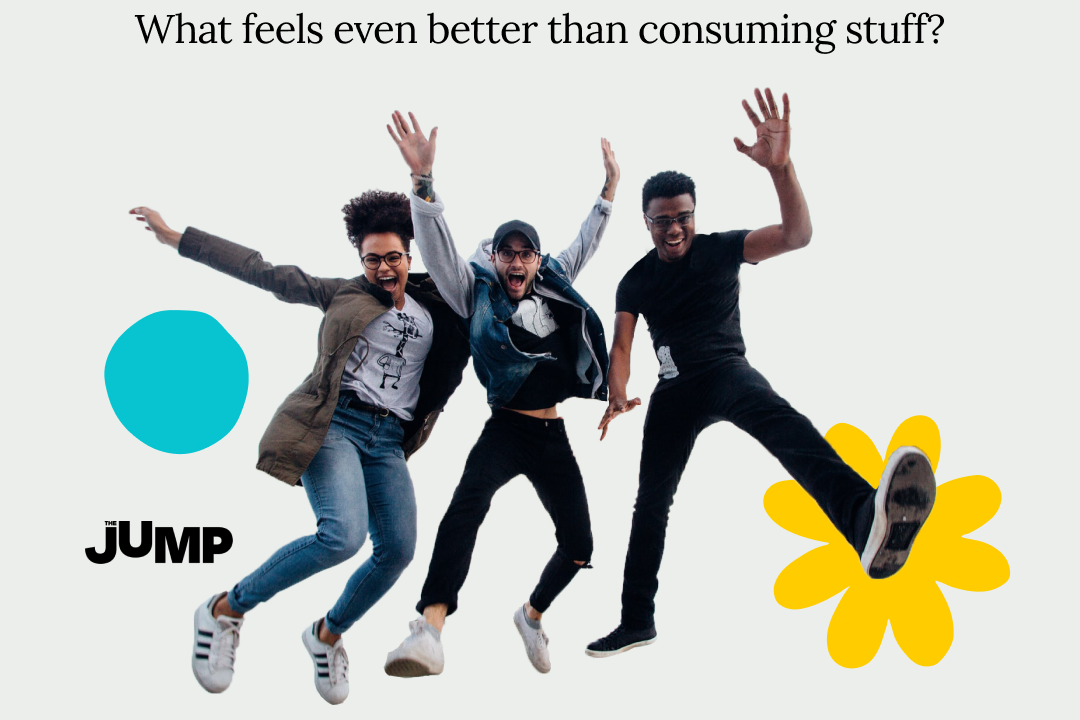What we wear means a lot to us, whether we love fashion or not. Even those who only wear things for practicality, have taken a conscious decision somewhere along the line to eschew trends and go minimal. Throughout history and across the world, clothing is more than just a way of keeping warm or protected. It’s a form of self expression. We use it to say something about ourselves and we ‘read it’ on the people around us.
But in the last 50 years the rate of our consumption of clothing has changed dramatically. And it’s causing unsustainable damage to the earth’s life support systems – to water, soil, land and nature. The fast fashion industry in particular is one of the most polluting, resource intensive and damaging industries in the world. It generates huge amounts of waste, with poor recycling practices and unethical behaviour. If you want to know the scale of the problem in a nutshell, it’s all here: https://takethejump.org/dress-retro
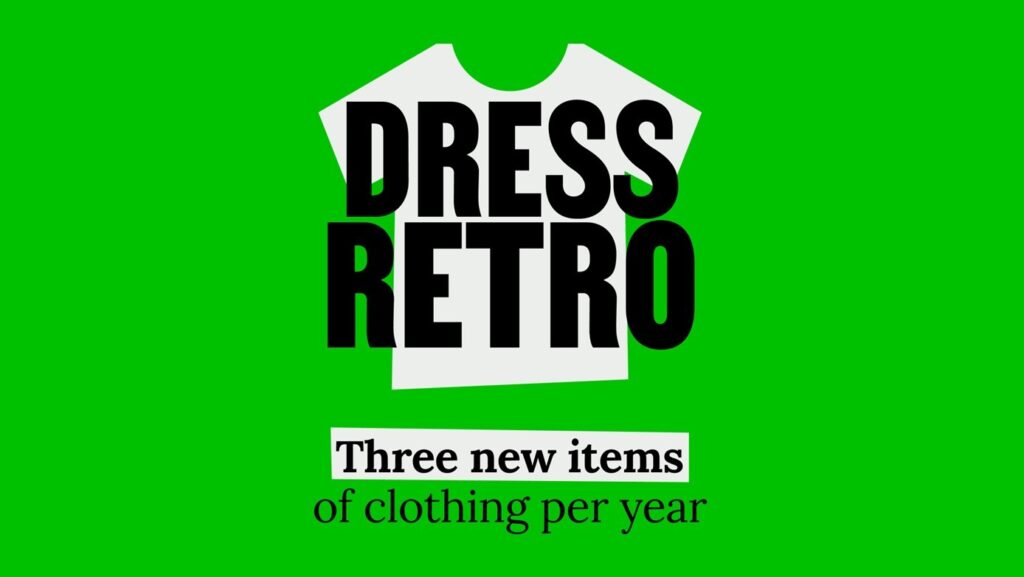
So if we want to live in balance, our behaviour around clothes has to change.
Thankfully the research behind Take the Jump has made things ridiculously simple for people living in developed countries – if we can stick to only buying three new items of clothing per year (maximum eight) we’ll be acting within sustainable planetary boundaries.
And if everyone in high consuming countries like the UK did this, it could deliver 6% of the 25-27% carbon savings that individuals can make, to keep the impacts of climate change within safe limits by 2030. The other 19-21% savings that are within the power of individuals, are shared across the other five shifts in Take the Jump – including eat green, end clutter, travel fresh and holiday local.
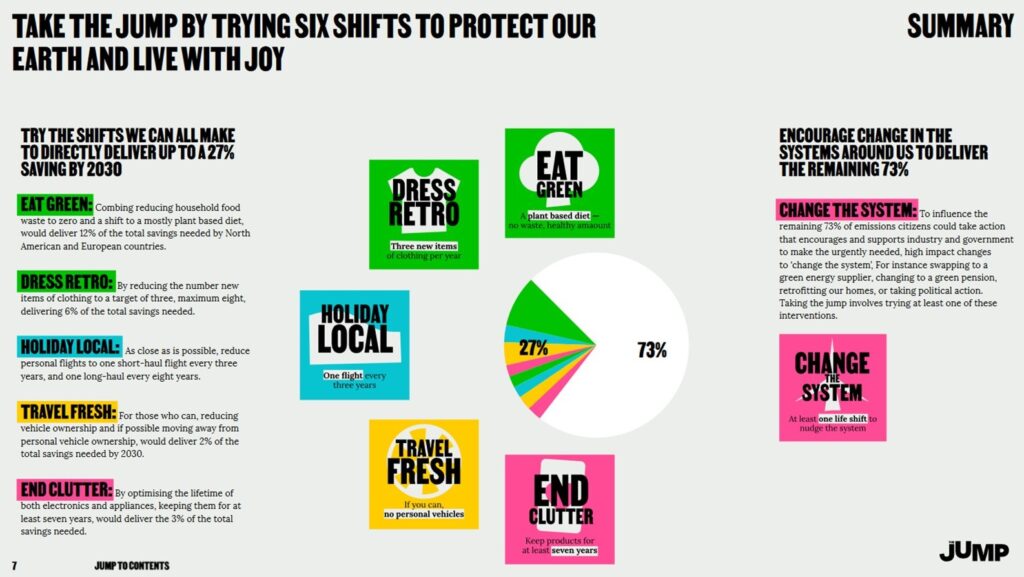
How easy/hard would you find ‘Dress Retro’? Many people I’ve spoken to say it wouldn’t be hard for them to stick to three new items a year at all, as they either don’t buy much new stuff, or only shop in charity shops anyway.
I have to confess this is a hard shift for me as I love clothes and often don’t find charity-shop shopping very fruitful. However, I have started on this journey and am actually enjoying the challenge.
The first step has been to check through my wardrobe and rediscover neglected treasures. This has been a joyous process and I’m delighted to have fallen in love with some old favourites again. I’ve also realised that I have plenty of clothes that I’m never going to wear and would be better owned by someone who will actually love them.
Thank goodness the three items a year does not include pants and socks! Or shoes, although I do make my shoes last at least five years so I’m already ticking that box. Pat on the back for me!
Second step is to think about how to make my own clothes last longer. Everyone is different but I have lots of rarely worn going out/occasion-wear items and a few very well-worn beloved everyday outfits. I absolutely hate it when I have to relinquish one of these ‘everyday friends’ to wear and tear, so I’ve been teaching myself how to mend things both invisibly and visibly, to make stuff last longer. Also reviving old jackets and cardies with cool new buttons. This has been fun and has fed my creative side. I’ve been trying it out on less precious stuff first (like my husband’s old shirts and jumpers) and slowly progressing to my own treasured things. Youtube has so many good videos on stuff like this. And Triangle Garden is planning to introduce some in person ‘visible mending’ workshops after Easter so keep an eye out on our ‘what’s on’ page or social media.
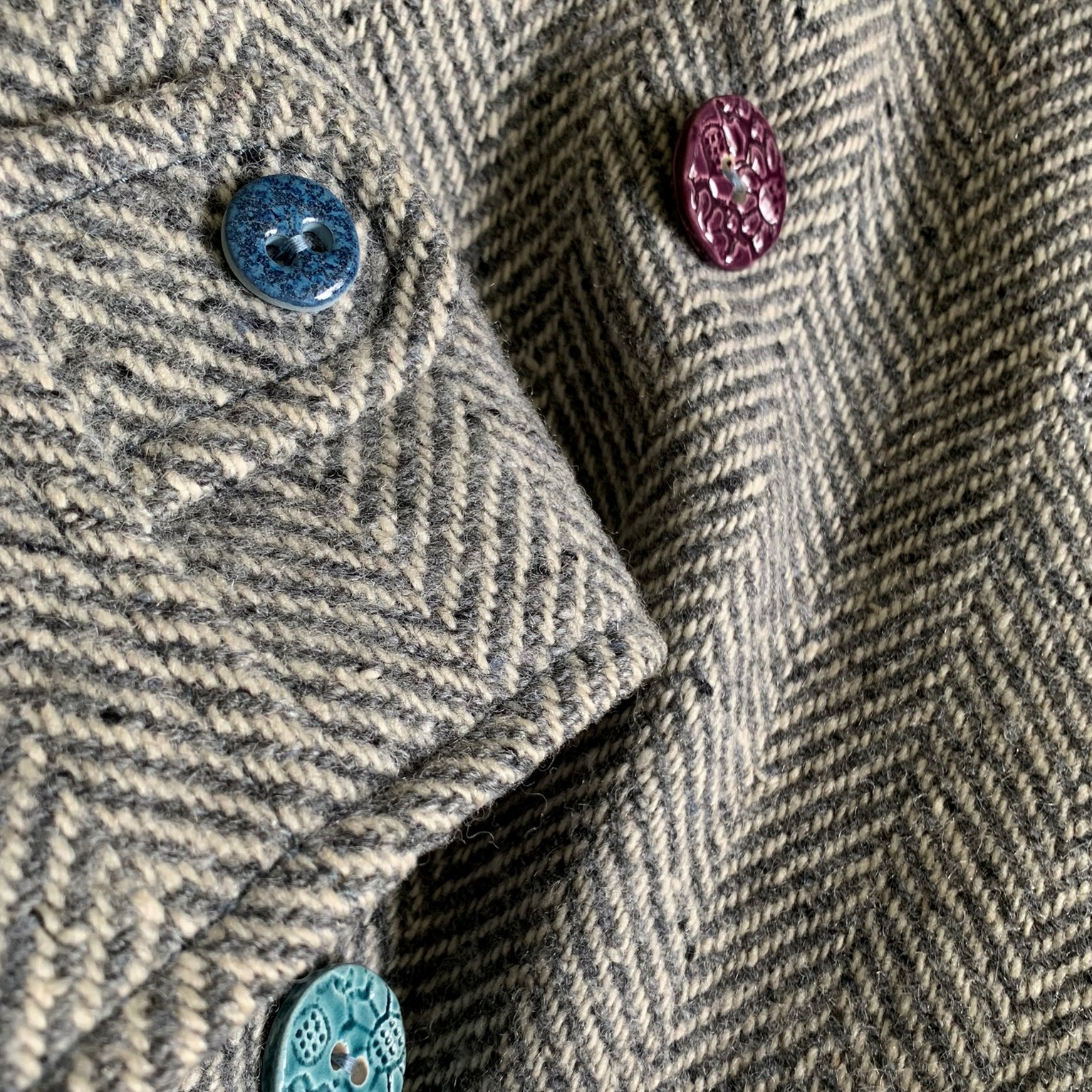
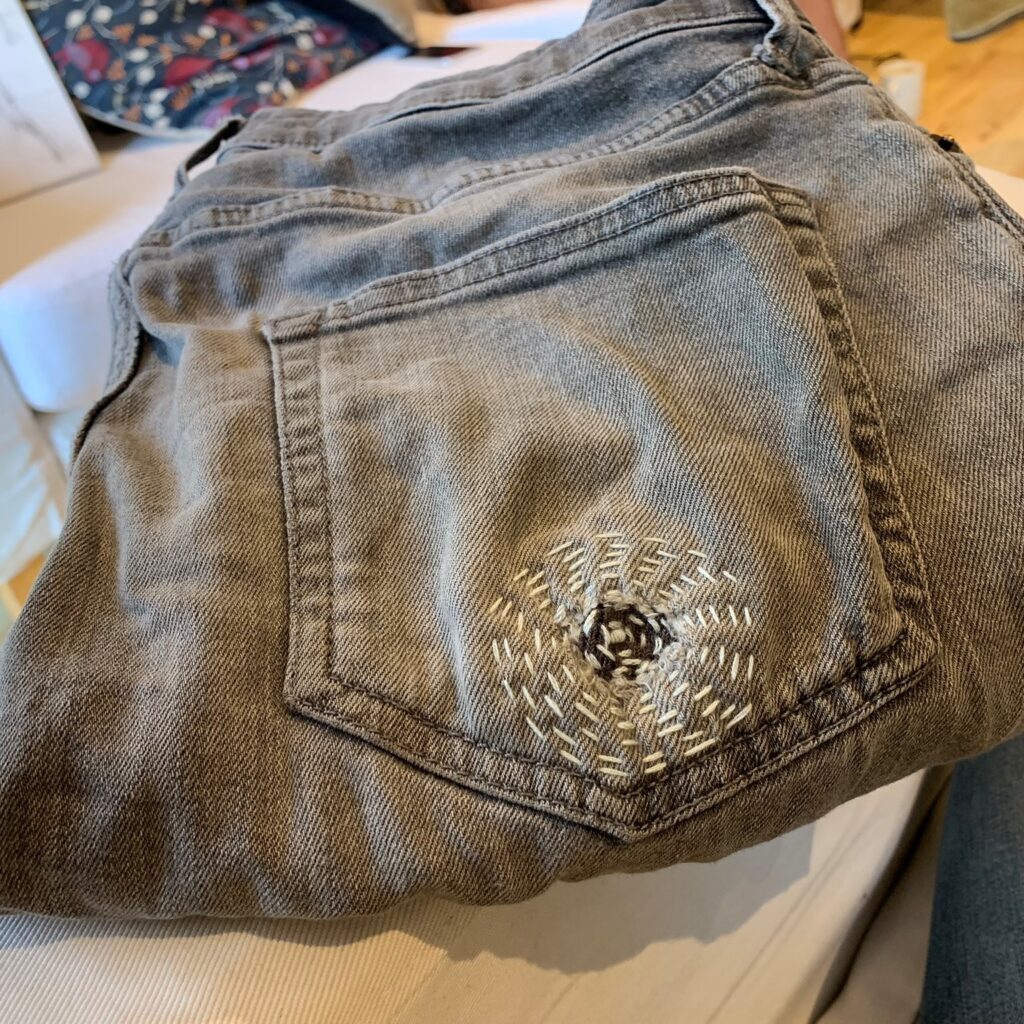
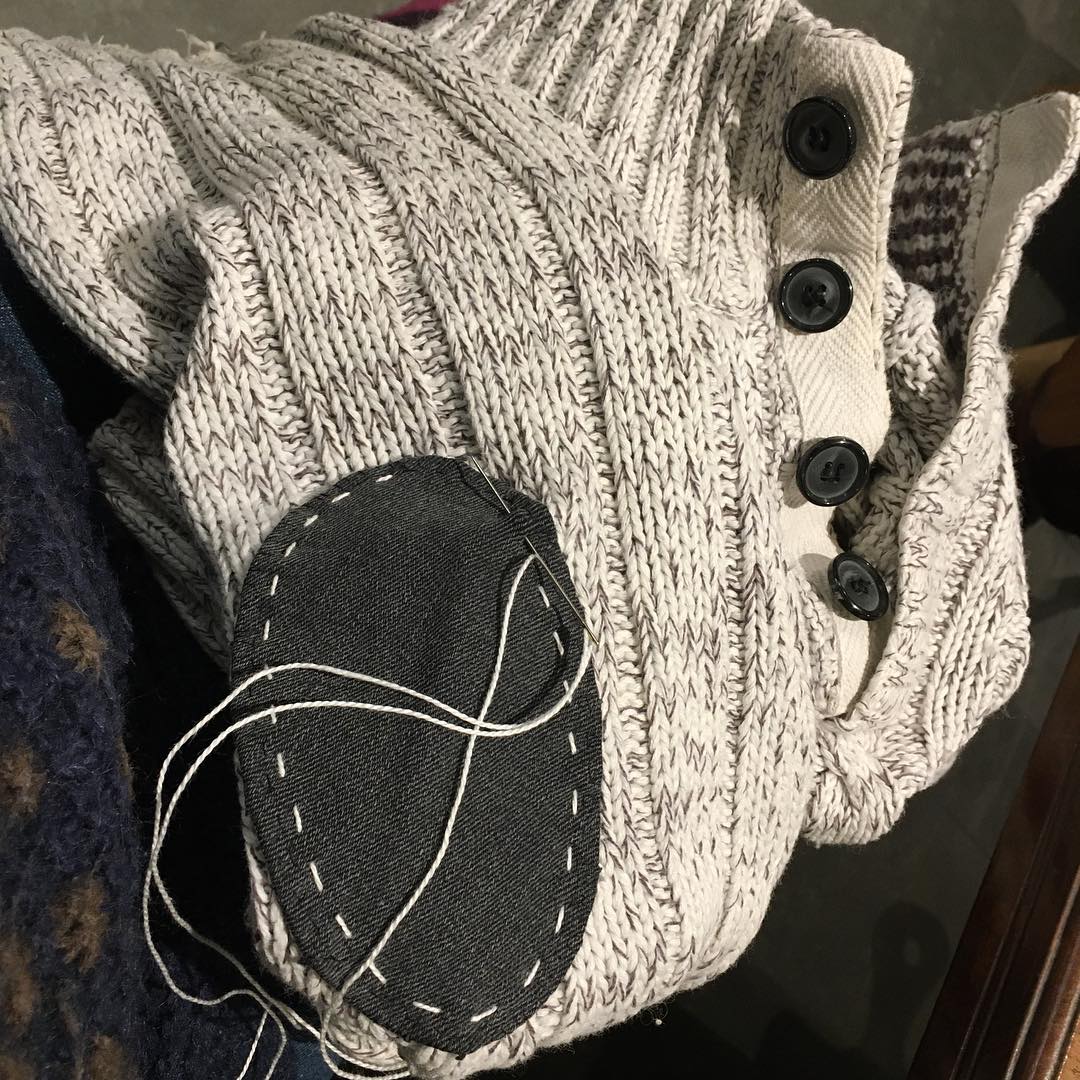
Next I have been thinking about how I go about buying clothes, and making some changes. For going out/occasion wear I’ve been looking on preloved e-sites like Ebay, Depop and Vinted where I’ve found some beautiful clothes by designers I would never have been able to afford new, at really reasonable prices. And the quality/wear is really good. Lots of people, it seems, (not just me), rarely wear the stuff they buy for special occasions.
Knitwear is another area where good quality preloved items are not hard to find. And if you want to avoid putting plastic micro-fibres into our rivers, buying knitwear made from wool, cotton or other natural fibres is really important.
For jeans, I’ve been buying new as I know the make that will fit me well and I know they’ll last several years (and can be patched on the inside to last even longer). Also the environmental impact of jeans can vary massively depending on the brand – find out more here https://www.ellenmacarthurfoundation.org/the-jeans-redesign/overview.
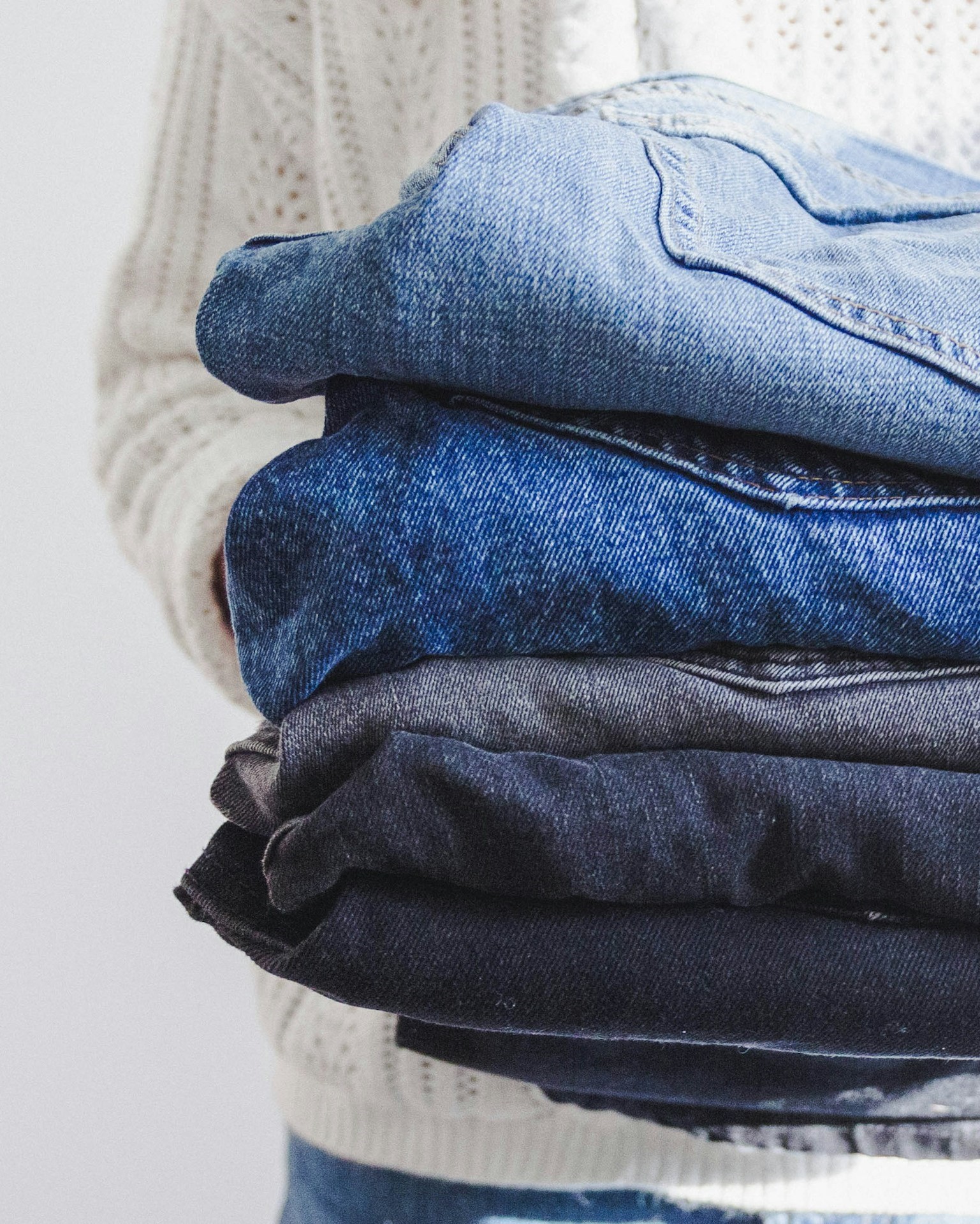
Other new things I’ve had to buy include a new pair of trainers (after my six-year old best friends went through at the soles), plus a new waterproof to replace one that was at least ten years old and starting to leak.
While I’ve not managed to keep to three items this year, I have stayed within the eight maximum, which gives me a huge feeling of satisfaction and helps to calm my general anxiety about what I can actually do personally to help stem the climate and biodiversity crisis.
The other thing that excites me is that this personal change (as with many of the Take the Jump shifts) has huge potential to ‘change the system’. If we all shift to ‘dress retro’, the fashion industry will have to change rapidly for the better. And there’s evidence that this is already starting to happen as awareness grows.
This has been a very personal journey and yours may be very different … but I feel I’m living proof that changing habits, that at first feel incredibly challenging, can actually be surprisingly liberating, and it really is worth ‘taking the jump!’
If you have a clothes-related challenge that I haven’t mentioned here, there’s sure to be something helpful on the Take the Jump website, which has all sorts of links to sites, apps, podcasts and initiatives to help you live with less stuff and more joy! Why not give it a try this spring…

